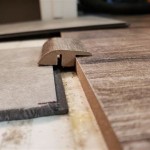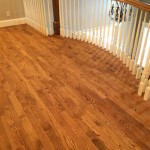Installing laminate flooring over concrete can be a great way to update the look of a room without breaking the bank. Though it may seem daunting, with a little bit of preparation and the right tools, it can be a relatively easy project. Here are some tips to help you get started.
Preparing the Concrete
The first step in installing laminate flooring over concrete is to make sure the surface is clean and level. If there are any cracks or holes in the concrete, they should be filled in with a concrete patching compound. It is also important to make sure the surface is free of any dirt, dust, or debris. Once the area is clean and level, you can begin laying the laminate flooring.
Choosing the Right Laminate Flooring
When choosing laminate flooring for your concrete surface, it is important to select a material that is specifically designed for use on concrete. Some laminate flooring options are specifically designed to be installed over concrete, while others may require a special adhesive or underlayment. It is also important to make sure the laminate is rated for the amount of foot traffic and moisture it will be exposed to.
Installing the Underlayment
Before you begin installing the laminate flooring, you will need to install an underlayment. This is a layer of foam or felt that is placed between the concrete and the laminate flooring. The underlayment helps to absorb sound and provide cushioning for the floor, as well as protect the laminate from moisture. Make sure to follow the manufacturer’s instructions when installing the underlayment.
Laying the Laminate
Once the underlayment is installed, you can begin laying the laminate flooring. Start in one corner of the room and lay the first board, making sure it is level and aligned with the walls. Once the first board is in place, you can continue laying the boards until the entire room is covered. Make sure to leave a small gap between the boards to allow for expansion.
Cutting Laminate Flooring
When you reach the edges of the room, you will need to cut the laminate flooring to fit. This can be done using a circular saw, jigsaw, or router. If you are using a circular saw, make sure to use a blade specifically designed for cutting laminate flooring. You can also use a jigsaw or router for intricate cuts, such as around corners or doorframes.
Finishing Touches
Once the laminate flooring is installed, you can add the finishing touches. This may include adding molding or trim around the edges of the room, as well as installing baseboards. You should also make sure to seal the edges of the flooring with a sealant to help protect the laminate from moisture.















Related Posts








